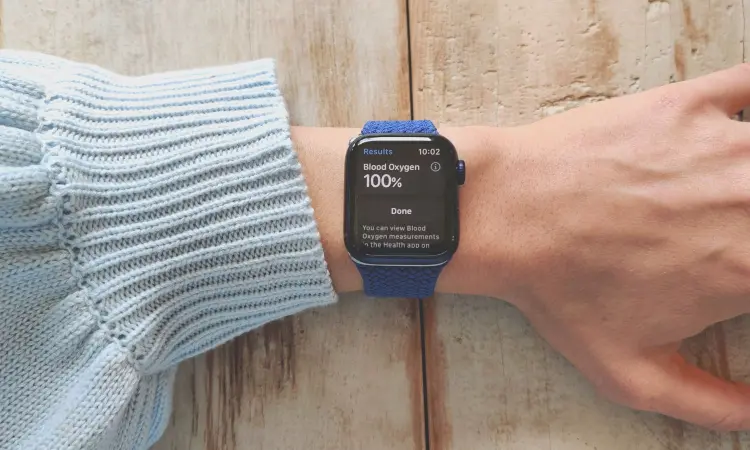- Home
- Medical news & Guidelines
- Anesthesiology
- Cardiology and CTVS
- Critical Care
- Dentistry
- Dermatology
- Diabetes and Endocrinology
- ENT
- Gastroenterology
- Medicine
- Nephrology
- Neurology
- Obstretics-Gynaecology
- Oncology
- Ophthalmology
- Orthopaedics
- Pediatrics-Neonatology
- Psychiatry
- Pulmonology
- Radiology
- Surgery
- Urology
- Laboratory Medicine
- Diet
- Nursing
- Paramedical
- Physiotherapy
- Health news
- Fact Check
- Bone Health Fact Check
- Brain Health Fact Check
- Cancer Related Fact Check
- Child Care Fact Check
- Dental and oral health fact check
- Diabetes and metabolic health fact check
- Diet and Nutrition Fact Check
- Eye and ENT Care Fact Check
- Fitness fact check
- Gut health fact check
- Heart health fact check
- Kidney health fact check
- Medical education fact check
- Men's health fact check
- Respiratory fact check
- Skin and hair care fact check
- Vaccine and Immunization fact check
- Women's health fact check
- AYUSH
- State News
- Andaman and Nicobar Islands
- Andhra Pradesh
- Arunachal Pradesh
- Assam
- Bihar
- Chandigarh
- Chattisgarh
- Dadra and Nagar Haveli
- Daman and Diu
- Delhi
- Goa
- Gujarat
- Haryana
- Himachal Pradesh
- Jammu & Kashmir
- Jharkhand
- Karnataka
- Kerala
- Ladakh
- Lakshadweep
- Madhya Pradesh
- Maharashtra
- Manipur
- Meghalaya
- Mizoram
- Nagaland
- Odisha
- Puducherry
- Punjab
- Rajasthan
- Sikkim
- Tamil Nadu
- Telangana
- Tripura
- Uttar Pradesh
- Uttrakhand
- West Bengal
- Medical Education
- Industry
Smartwatch can detect short-time hypoxemia compared to a medical-grade pulse oximeter

Czech Republic: A recent study in Digital Health has found that the Apple Watch Series 6 can accurately detect reduced levels of blood oxygen saturation (SpO2) below 90% compared to a medical-grade pulse oximeter.
"The technology used in this smartwatch is adequately advanced for the indicative SpO2 measurement outside the clinic and can detect states of reduced blood oxygen saturation," the researchers wrote in their study.
Pulse oximetry as an indirect peripheral SpO2 measurement method is a relatively new metric in smartwatches. Still, it is becoming routinely available in new models, allowing convenient SpO2 monitoring at home or, with some restrictions due to movement obviating the need for a dedicated pulse oximeter. Additionally, the SpO2 sensor of the smartwatch does not need an attachment to a finger to complicate daily activities. This might help mountaineers in high altitudes or athletes in training, and patients with lung diseases such as COPD (chronic obstructive pulmonary disease), cardiovascular disease, or dealing with concerns or consequences of COVID-19. The ability of smartwatches, in particular, to measure SpO2 without conscious use intervention might help detect intermittent hypoxemia associated with sleep apnea.
Against the above background, Jakub Rafl, Czech Technical University in Prague, Kladno, Czech Republic, and colleagues explored how a commercially available smartwatch that measures peripheral blood oxygen saturation (SpO2) can detect hypoxemia compared to a medical-grade pulse oximeter.
For this purpose, 24 healthy participants were recruited. Each participant wore an Apple Watch Series 6 (smartwatch) on the left wrist and Masimo Radical-7 pulse oximeter sensor on the left middle finger. The people breathed via a breathing circuit with a three-way non-rebreathing valve in three phases. The people inhaled the ambient air in the first 2-minute initial stabilization phase. Then the participants breathed the oxygen-reduced gas mixture (12% O2) in the 5-minute desaturation phase, temporarily reducing their blood oxygen saturation. In the final stabilization phase, people inhaled the ambient air until SpO2 returned to normal. SpO2 measurements were simultaneously taken from the pulse oximeter and the smartwatch in 30-s intervals.
The study revealed the following findings:
- There were 642 individual pairs of SpO2 measurements. The bias in SpO2 between the smartwatch and the oximeter was 0.0% for all the data points.
- The bias for SpO2 less than 90% was 1.2%.
- The differences in individual measurements between the smartwatch and oximeter within 6% SpO2 can be expected for SpO2 readings 90%–100% and up to 8% for SpO2 readings less than 90%.
"As a representative of wearables, Apple Watch Series 6 provides reliable values of SpO2 compared to a medical-grade pulse oximeter, at both normal and optimal levels and induced desaturation with SpO2 below 90%," the researchers wrote.
"In this smartwatch, the SpO2 monitoring technology used is sufficiently advanced for the indicative measurement of SpO2 outside the clinic and can detect states of reduced blood oxygen saturation", they concluded.
Reference:
Rafl J, Bachman TE, Rafl-Huttova V, Walzel S, Rozanek M. Commercial smartwatch with pulse oximeter detects short-time hypoxemia as well as standard medical-grade device: Validation study. DIGITAL HEALTH. 2022;8. doi:10.1177/20552076221132127
Dr Kamal Kant Kohli-MBBS, DTCD- a chest specialist with more than 30 years of practice and a flair for writing clinical articles, Dr Kamal Kant Kohli joined Medical Dialogues as a Chief Editor of Medical News. Besides writing articles, as an editor, he proofreads and verifies all the medical content published on Medical Dialogues including those coming from journals, studies,medical conferences,guidelines etc. Email: drkohli@medicaldialogues.in. Contact no. 011-43720751


